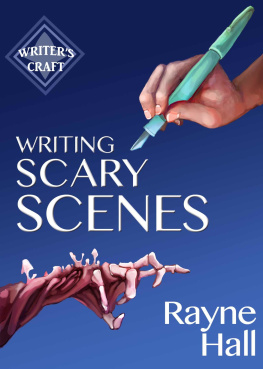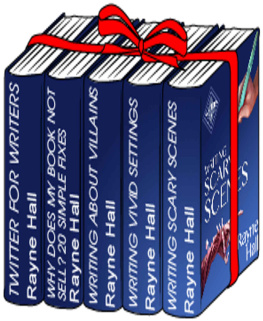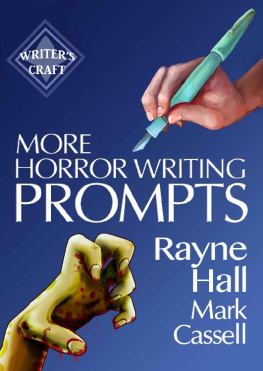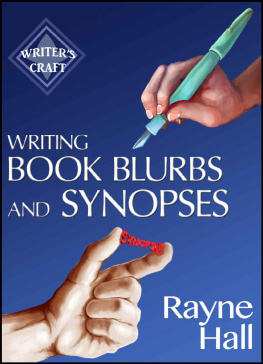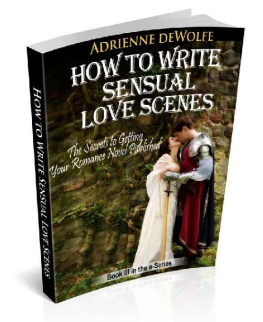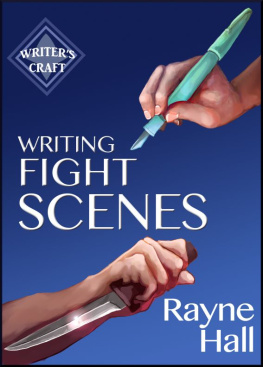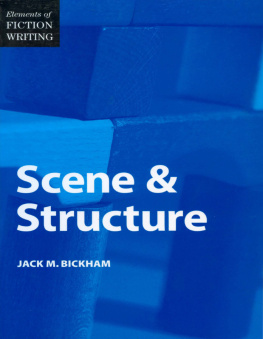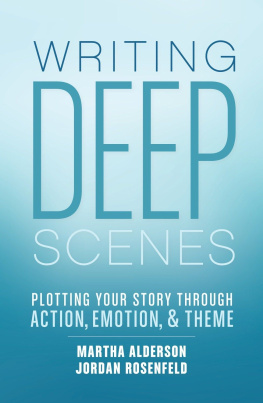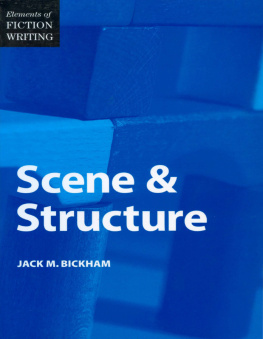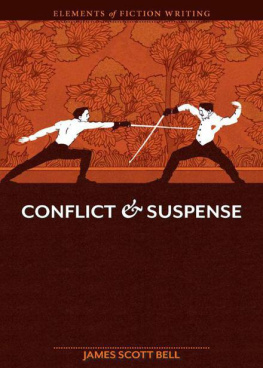Table of Contents
WRITING SCARY SCENES
by
RAYNE HALL
Copyright 2012-2014 Rayne Hall
All Rights Reserved
Cover Art and Design: Erica Syverson
Scimitar Press January 2014 Edition
This ebook is licensed for your personal enjoyment only. This ebook may not be re-sold or given away to other people.
CONTENTS
Sample Story: Druid Stones
Sample Story: Through The Tunnel
Sample Story: Only A Fool
I love scaring readers. Don't you?
This book will teach you practical tricks for turning up the suspense. Make your readers' hearts hammer with terror, their breaths quicken with excitement and their skins tingle with goosebumps of delicious fright.
Are you working on a ghost story, a horror novel, a thriller, a paranormal romance, an urban fantasy or a romantic suspense? Whether you're planning or revising your scary scenes, whether you aim to tease your readers with mild tension or to send them on a rollercoaster ride of fear, this book shows step-by-step how to create the effects you want.
I never meant to become a horror author. As a novice writer, I fluttered from genre to genre, penning everything from funny poems to tragic love stories but the stories that won contest prizes were always the scary ones, and most of the yarns accepted for publication were horror.
I set about mastering the craft of scary writing by studying the masters, authors who treat their readers to first-rate fear: Edgar Allan Poe, Ray Bradbury, E.F. Benson, Shirley Jackson, Stephen King, Lisa Gardner, Tanith Lee and many more. I studied their techniques, practised them and added them to my own writing craft toolkit.
My fiction has become better. When I look at a story I wrote years ago, I see at a glance what needs changing to turn up the fear. Other writers and publishers come to me for help. I offer freelance consulting, teach classes on how to write scary scenes, edit anthologies of horror fiction and continue to write my own scary tales.
Whenever I try to write something different, the story quickly turns into something dark and scary.
Some years ago, I started a light-hearted historical romance novel about a handsome smuggler and a governess. At first, the story progressed as I intended, with funny situations and witty banter... but then I discovered there was a centuries-old curse on the family, the hero had a guilty secret, and the housekeeper was on a serial killing spree. I just could not keep the horrors out of the book.
Another time, I conceived an adventure fantasy about a swashbuckling hero who fought evil... but as I wrote, it turned out that the evil he was fighting was inside him. The book quickly filled with war, rape, torture, demonic possession and human sacrifice.
Clearly, I'm meant to write dark and scary stuff.
My preference is for horror without much violence - no chainsaw massacres, no dismembered bodies, no lakes of blood or mounds of gore. Although I've written scenes of torture and mutilation, my preference is for psychological horror. I like observing how characters feel and act in the face of fear, and I want my readers to share that experience. Often, the characters in my stories have brought the fate upon themselves, or the boundaries between good and evil are blurred. What is more scary than our own evil side?
Whatever kind of fear you want to create with or without gore, psychological or graphic, mild or intense this book will show you how.
Most of these techniques will suit many different scenes, but you may choose to use some and discard others. You're the CEO of your writing; your vision counts. Choose the techniques which suit the story you're working on and your individual author's voice. You can dip into and out of this book, picking up the skills you need right now, and leave others for a future project.
Writing Scary Scenes is a book for advanced-level and professional writers. It equips authors who have already mastered their craft with specialist skills. If you're a beginner, I recommend you start with a book on the basics of fiction writing.
I write in British English. If you're used to American English some of the words and spellings may look odd, and the punctuation and grammar may surprise you, but I'm sure you'll understand me anyway.
When talking about characters, I'll switch between he and she. Everything I say applies regardless of gender.
I hope you'll enjoy my book and will apply the techniques to your own writing. Create scenes which are so suspenseful, so exciting, so scary that they stay in your readers' mind. Scaring readers is fun!
Rayne Hall
When you write in a deep point of view (PoV), the character's emotions transfer to the reader. By scaring the PoV character, you will scare the reader.
Usually, you want the reader to feel what the protagonist feels. Sometimes it's different. For example, you may want the reader to feel suspense and apprehension about something the protagonist isn't aware of. She's blithely taking off her clothes on the beach and stepping into the sea for a swim when the reader already knows but she doesn't that the water is full of sharks.
Fear comes in many different flavours. For each scene you write, choose one or several kinds of fear.
SUSPENSE
This is the urge to find out what will happen next, or how it will happen. It drives the reader to turn the pages. Sometimes, the reader feels suspense before the PoV does. Suspense makes the heart beat faster, and the person may sit on the edge of their seat, leaning forward.
Readers love suspense. Whatever genre you write, create a lot of suspense throughout your book, but vary its intensity.
UNEASE
This is a mild form of fear. The character doesn't know whether there is any danger or what kind, she just has a niggling feeling that something is wrong.
She may feel cold, yet her hands are warm and sweaty. Unease may feel like a cold trickle running down the spine. Perhaps she glances around a lot or else, she may avoid looking back over her shoulder. She laughs nervously, swallows often and clears her throat. If she sits, her arms cross and uncross repeatedly, though she may not be aware that they do. Perhaps she paces up and down the room, checks her appointment diary frequently without really looking at it, or picks the varnish off her fingernails. If other people are around, she may pretend not to notice that something is amiss. Her dialogue may become stilted. If she's having a meal, she may have no appetite and push the food around on her plate. She may tell herself that there's nothing wrong, and force her limbs to relax.
This type of fear suits every genre, and you can use it several times in your book. Often, unease is followed by stronger forms of fear when the danger manifests.
ANXIETY
This is similar to unease, but the character knows the danger is real. This is what people feel before important job interviews, before a bungee jump and while sitting in the dentist's waiting room. In fiction, your character may feel this when she is about to enter the monster's lair or when she knocks on the villain's door.
The heart beats fast. The character crosses and uncrosses her legs, adjusts her shirt-cuffs frequently, plays with the necklace at her throat or picks the varnish off her nails, though she may not be aware that she is doing these things. She may hold her palms on her thighs, or rub them together. She may run the fingertips of one hand across the palm of the other, or interlace her fingers and rub them up and down.
Her breathing is shallow. She may feel a strangling pressure on her throat or get mild stomach cramps, and she may need to go to the toilet to relieve her bladder.
If the behaviour of other people makes her nervous, she may try not to attract their attention, for example by slumping in her chair and pretending to read a book. She may also edge closer to the exit door.

